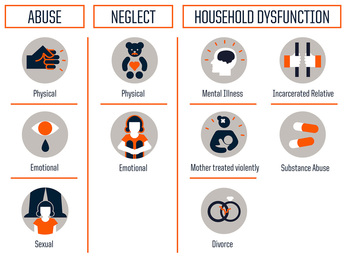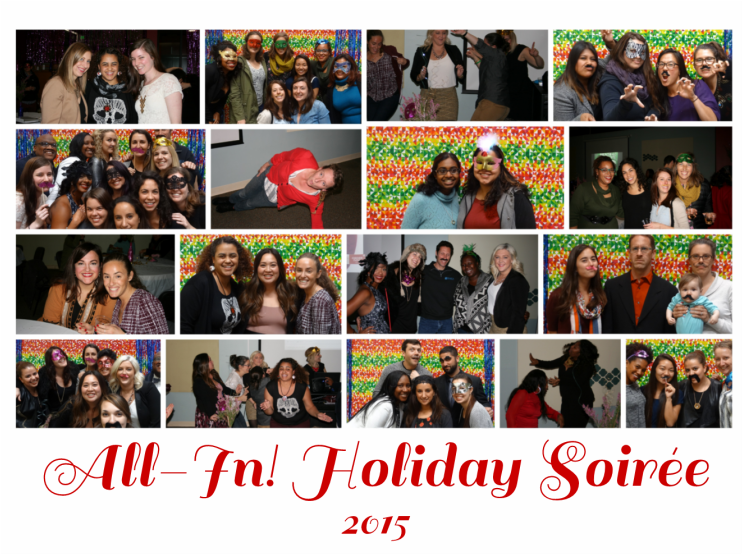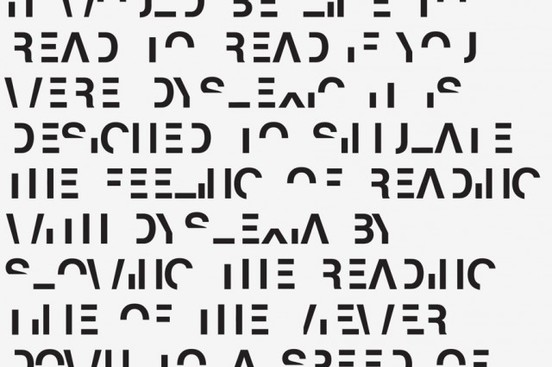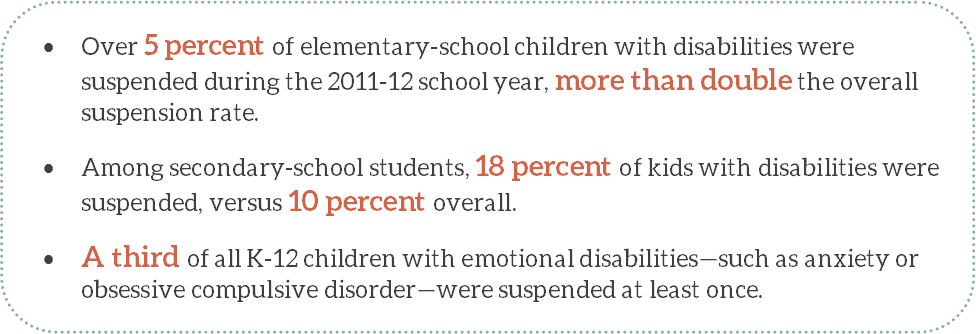 Looking for resources on working with kiddos with a specific diagnosis? Starting a group and wondering what curriculum to use? Well, you’re in luck - the clinical strand has started its very own clinical library, located in Classroom 2 at Rock! Here’s what you need to do:
 REMINDER: All In! has developed its own social skills manual based on the interventions that our amazing clinicians have already been using in their group work. The manual allows you to customize your own curriculum based on the age and needs of your students. There is a copy of the social skills manual in the library for you to review and check-out!  Blog post written by: Robyn Ganeles, Assistant Director of Clinical Intervention Services  “A traumatic event can seriously interrupt the school routine and the processes of teaching and learning. There are usually high levels of emotional upset, potential for disruptive behavior, or loss of student attendance unless efforts are made to reach out to students and staff with additional information and services. Students traumatized by exposure to violence have been shown to have lower grade point averages, more negative remarks in their cumulative records, and more reported absences from school than other students. They may have increased difficulties concentrating and learning at school and may engage in unusually reckless or aggressive behavior.” -National Child Traumatic Stress Network  Seneca is proud to collaborate with the Trauma Center at the Justice Resource Institute on an exciting research project focused on improving the quality of care for youth who have experienced interpersonal trauma. The Developmental Trauma Disorder (DTD) field trial study aims to expand trauma-related services for children by developing a diagnostic picture that more accurately captures the cluster of symptoms that we see in children who have experienced complex and chronic trauma. Youth who struggle with multiple, recurring traumatic exposures comprise the largest group of clients served by our agency. In working directly with these children, Seneca has learned that trauma can often present as depression, anxiety, truancy, behavioral disorders, social skill deficits, learning disorders, drug abuse, hyperactivity, or behavioral regression. Yet at this time, no diagnosis exists that appropriately reflects the range of social, emotional, cognitive, and behavioral symptoms for children who have experienced complex trauma. As a result, children affected by trauma are often misdiagnosed which leads to ineffective and, in some cases, harmful treatments. The DTD diagnosis will provide practitioners and clinicians with a framework to understand and treat underlying causes rather than emphasizing problem elimination and behavioral control without considering the function of the behavior. The All In! Partnership Project’s commitment to unconditional education includes advocating for a greater understanding of the role that trauma plays in the lives of our students and families. The All In! clinical team works closely with schools to establish a trauma-informed school culture - one that recognizes the prevalence of trauma in our communities, understands the connection between trauma and a child’s presentation, addresses potential triggers in the environment that can activate a child who has experienced trauma, and responds by acknowledging that the behaviors represent a trauma-based survival strategy. All In! views the collaboration with The Justice Resource Institute as an opportunity to further the mission of educating communities about the impact of trauma on children and implementing best practices regarding care and treatment. We would like to recognize Kate Kenealy and Jessica Welsh, members of our clinical team who are volunteering their time to gather data for the DTD field trial study. We are still looking for study participants!
If you are working with families that may be interested, or if YOU and your child want to participate, please contact: Robyn Ganeles, Project Coordinator (510) 648-4891 or [email protected] Please click the images below for additional resources:  Blog post written by: Robyn Ganeles, Assistant Director of Clinical Intervention Services  A recently published article from EdSource, “California Students with Dyslexia Gain Ground with New Law”, begins with an introduction to a student named Max: “Max has dyslexia, a reading disability thought to originate in the neurological structure of the brain. The words ‘smart’ and ‘special education’ aren’t spoken together often by educators, but Max, perched on a swivel chair before a microphone, did just that with the legislators. He told them he was smart, he had not received the correct instruction for dyslexia in seven years of special education and he wanted the legislators to do something about it” (Meredith-Adams, 2015). Dyslexia is a relatively common but widely misunderstood learning disability, and within the last few years we have seen increased attention to and advocacy for dyslexia. As the article points out, “This month, Gov. Jerry Brown signed into law Assembly Bill 1369, authored by Assemblyman Jim Frazier, D-Oakley. The new law requires schools to assess struggling readers specifically for dyslexia, the most prevalent learning disability in the U.S. and a disorder that affects as many as 80 percent of California students with learning disabilities in special education.” We’re waiting on the California Department of Education to give us further guidance on what this means for our work in schools, so there is no immediate action for us to take at this time. Click here to read the full article If you’re interested in learning more about Dyslexia, check out these additional resources:  Blog post written by: Alli Guilfoil, Director of Academic Intervention  Being more proactive about keeping up to date on relevant research and current events related to our work at All-In has been on my mind lately. I've spent some time catching up on a backlog of articles that I've been meaning to read for the past few months (and longer). A top-of-mind issue is disproportionate suspension rates of students of color and those identified with special education needs. Part of my role this year includes supporting a few of our middle and high school partners who are seeking guidance around developing systems and interventions as alternatives to suspension. Last week I found myself standing in front of an audience of school teachers and staff who are struggling to meet the needs of students who fall into this cohort. A portion of these teachers and staff are asking for “zero tolerance” approaches to discipline policy and many are highly skeptical of restorative justice frameworks that are coming from the home office/district. These conversations have provided an opportunity for me to re-evaluate my perspective, based on my experience, understanding and knowledge related to this topic. One of the particularly interesting articles I found, “Why Schools Over-Discipline Children with Disabilities” from The Atlantic, gives an overview of the issue of disproportionate suspension rates and highlights several related research studies. The most dominant, UCLA’s Civil Rights Project, reported that: These statistics show the significance of this issue, especially considering the correlation between suspension rates and life outcomes. According to the article, “Studies have found that just one suspension makes a kid three times more likely to be involved with juvenile justice in the following year, and more than twice as likely to drop out of school.” In response to this data, schools are taking action by changing policy and investing in interventions that will potentially work towards supporting schools and ultimately re-engaging students who are struggling. Large urban school districts like Los Angeles and Oakland Unified School Districts have already eliminated the classification of suspension for non-violent offenses, like “willful defiance”. As a sign of alignment and progression, this article references “new discipline guidelines”, including PBIS. This is where we come in, to help create positive changes related to the school culture and climate, including Tier I systems and interventions. Check out the full article and consider the ways your school site relates to this issue and the research. Ask yourself, what strategies are we supporting schools to implement in response to the needs of these student?  Blog post written by: Lilly Green, Direct of School Partnerships  “There are always reasons for people's behavior, and it's easy just to dismiss them and assume that we already know their story, especially if they're no good at showing their emotions. Life gives you all these knocks, it's so easy to form a shell to protect yourself. I've done it myself.” - Kate Dickie  Today the behavioral stream would like to highlight an exceptional staff that has gone above and beyond her job description. Bria Lee, Student Support Assistant at our wonderful partnership school Lazear, is known for her great attitude and big smile that brightens up the room. You can often find this staff in the classroom redirecting students, or out on the playground playing with them. Not only has this staff being working double time between All-In! programs, she’s also been working as an on-call/overnight staff for Willow Rock. We are amazed at her ability to consistently show up with such a dedication to work with our students, and we appreciate the contagious laughter she brings with her! This staff continues to grow with the All-In! program by effectively managing her time, completing ALL of her documentation, and helping her team of SSA's complete their documentation. Bria’s desire to help her team extends beyond the workplace. She’s known for her great listening skills and support, and has even helped with apartment hunting for her fellow staff when they are out of town. When asked, "What do you do for your self-care?", Bria answered “I sleep, listen to music and DANCE!” With that being said, please give a standing ovation, a round of applause, or just a big “WHOOP WHOOP!” for Bria!  This month the behavioral stream has been focusing on DATA! I interviewed Eva Portley Dangerfield, our Behavioral Intervention Specialist, and one of the guru's for behavioral data, to find out what she had to say about data:  1. What is DATA? Data is simply a bunch of information that is collected and analyzed to see patterns and trends. We use data to make decisions and to drive our next steps. It tells us to either fix, increase or tweak something (interventions), or to leave things alone. Don't fix if it's not broken! 2. How do we collect DATA? You can collect data with specific data sheets but it just depends on what we are looking at. Do we want to see a decrease in behavior excesses or increase in skill deficits? Do we want to see what times behaviors occur? How frequent? How long? To what magnitude or intensity? For skills, are we looking at how fast/fluent the individual is? How long it takes for them to respond? These are tricky and just depends on case by case basis. 3. How, When and why do we input DATA? You can input data in a variety of ways. You can use data sheets or you can use post-it notes! What’s important is that you keep collecting. These are just a few steps to help those that are attempting to track and collect data for our students’ behavior. Once you’ve collected the data, it should be shared with your team in order to make a creative plan for the student. When all else fails, Keep collecting data!! |
Authors:School Program Partnerships We're Hiring!Interested in joining our School Program Partnerships' Team? Check out our open positions below!
Categories:
All
Archives
May 2024
|







 RSS Feed
RSS Feed